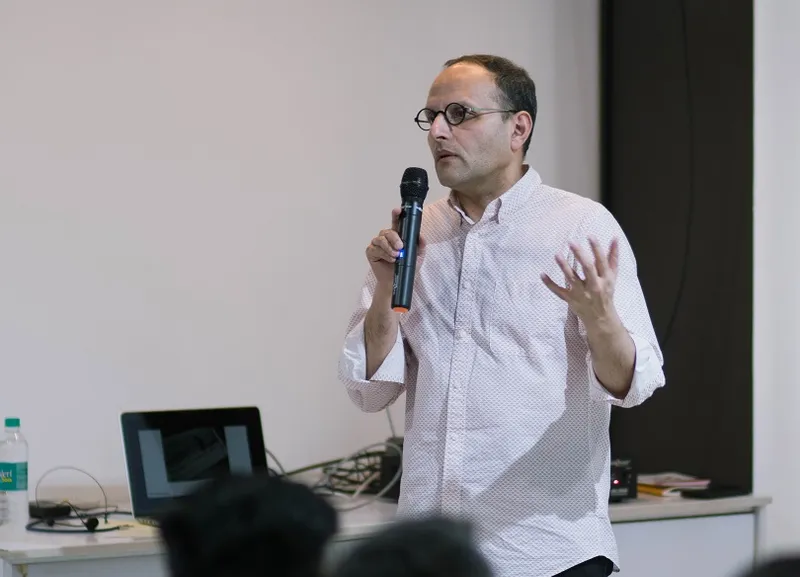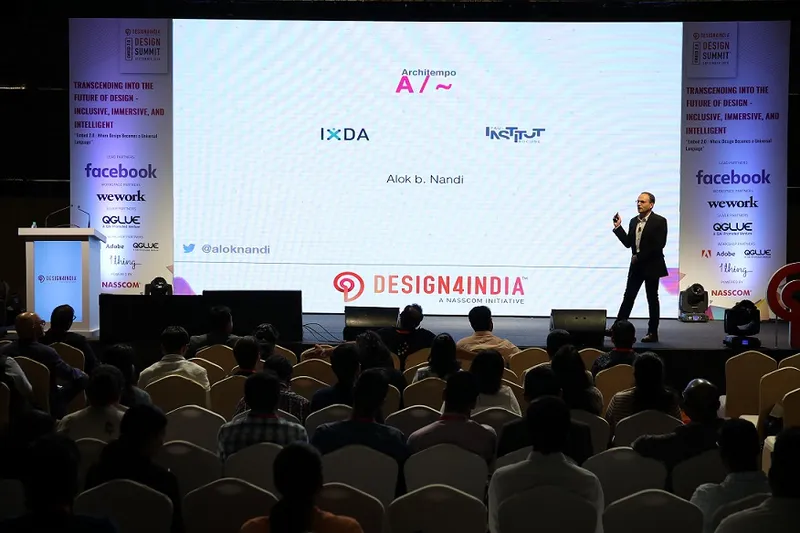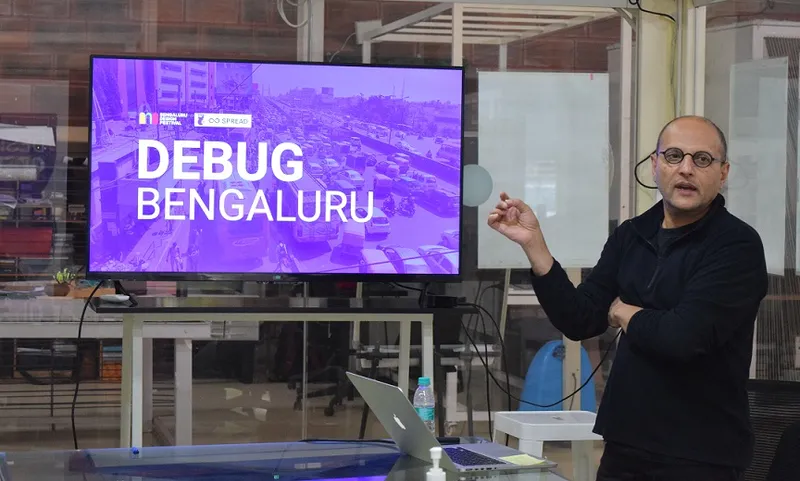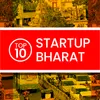Design in a ‘connected-hyper-knowledge-society’: Bengaluru Design Festival insights from Alok Nandi of Architempo
In our final speaker interview from this international design festival, we share expert tips on the creative mindset and design ecosystems. Here are some key takeaways.
Alok Nandi is the Creative Director at Architempo, Lecturer at Institut Paul Bocuse, and Past President of the Interaction Design Association (IxDA). Based in Brussels, he has also been a creative entrepreneur right from the early days of the web.
He is involved in a wide range of domains from immersive media to food systems design. His clients are in varied sectors: education, health, transportation, and media. In 1991, he authored a book on filmmaker Satyajit Ray, prefaced by Henri Cartier-Bresson. He designed an exhibition on Ray at the Cannes Film Festival.
Alok was also a keynote speaker at the recent Bengaluru Design Festival, for which YourStory was the media partner. See our writeups here, as well as earlier coverage of other design conferences like DesignUp from 2022, 2021, 2020, 2019, 2018, and 2017.
See also YourStory’s Book Review section with takeaways from over 350 titles, and our d-Zen (‘Design Zen’) section for more design resources.

Alok joins us in this insightful interview on strategic design, pandemic resilience, and the diversity of the design field.
Edited excerpts below:
YourStory [YS]: What is your current field of research/activity in design?
Alok Nandi [AN]: Nowadays, there are three streams of activity and research.
Strategic design: what does it mean to (try to) work on things that do not exist yet, and how to dialogue with entrepreneurs or corporate innovators on this and navigate on some new terrains
Immersive spaces and narratives: rework on the re-apparition of XR/AR/VR enabled by some techno push and some VR hype. In the early 2000s, I co-founded a spinoff into interactive immersive setups for museums and urban settings with an AR engine we co-developed.
Food systems, connected to the notion of “foodware”, which I mentioned at the
Bengaluru Design Festival in the panel, Designing for the Next Billion Users. This is in resonance with my teaching activities in Lyon’s hospitality/culinary Institute Paul Bocuse.
In a nutshell, I continue my activities between a designer, lecturer, author, and creative entrepreneur.
[YS]: What are three outstanding examples you have seen of effective design during the COVID-19 pandemic?
[AN]: The idea of “effective design” in general terms is not an easy one, as the design is situated and appropriate for a specific context. COVID-19 has colonised the human species and shown us the tensions and weaknesses in systems made by humans.
It has revealed and reminded something that many are telling for the last 70 years: we need hybridity in systems. For these to be resilient and sustainable,… In other words, mono-industrialised chains producing one major type of stuff en masse are sources of degradation of diversity, hybridity, and humanity.
Hence, some effective design examples took place in the realm of “social interactions”, where design helped humans to co-elaborate and survive. These were mostly service-oriented: helping aged people to get back health or food, allowing people to get some basics, and so on.
Now, if we look at everyday business, the effective dimensions were brought by
distributed tools and networks enabled by the internet (e.g. Zoom, Google Meet, shared documents, and delivery services). But these were existing before the pandemic and helped people to be somehow effective.
I am not able to give outstanding examples, as what I see now is a kind of global amnesia in people’s behaviours; many seem to have forgotten what we went through and are back to activity as usual.
“We live in a careless society”—a subject to be explored in some future workshop or conference.

[YS]: In the post-pandemic era, what is the key role of designers?
[AN]: Allow me to separate “design” from “designers”. There are different roles for designers as in other professions, such as medical ones. Some designers are more into strategy and organisational design, others are into process and services, while yet others are into shaping material stuff. Some are, of course, into all these at certain times.
For all, the role of “design”, at large, is to help shape the next but mainly to rebalance systems and bring back attention to things appropriate for and respectful of humanity-related dimensions, taking care of human values, and respecting non-human elements we interact with. These include nature, climate, places, plants, and animals. While other ‘non-designers’ are focused on financial or industrial matters.
[YS]: How should designers strike that delicate balance between ‘stick to your vision’ and ‘adapt to a changed world’? What does it take to build the courage to pivot?
[AN]: Your question is not only for designers. Any of us has to deal with the complex moments of pushing for change, questioning routines, and breaking boundaries. Designers might be expressing and crafting these as it is their core activity. But some who are dealing with these questions are entrepreneurs.
The courage to be an “entrepreneur” (entreprendre in French = grasp your future) needs to be cultivated and highlighted in education systems, from childhood to lifelong learning. How do we move from a mindset of “consumer” (20th-century favoured) to one of a “conceiver” is a question I deal with in my workshops, talks, conferences, and classes.
[YS]: Is there such a thing as the ‘ideal age’ for a creative person, or can the creative bug strike you at any time? How should people keep themselves open to adopting a creative career later in life?
[AN]: Anyone is creative. But maybe not everywhere or at any time. The challenge is to get the right context.
The core question is how to develop creative confidence. Our industrialised education systems do not help (so far). What will trigger and strike the creative bug would be easy if context and confidence are in synch at any moment in life.
So, to keep oneself open to curiosity is in itself a craft, which can be supported by reading, travelling, visiting exhibitions, attending concerts, and conferences—any social interactions.
One fundamental notion I work on for quite some time is: You do not design experience, you work on conditions for experience to happen. This applies to activating the creative bug.

[YS]: Who are some of the designers you admire the most today? What is it that makes them special?
[AN]: Design is a collaborative activity where you have many players working together to make something happen.
However, I will just give one name of a designer-educator that readers here need to know in a desi context: M.P. Ranjan. He was a design thinker, an educator, a designer, and a connector. He was active at NID, and openness and curiosity made his contributions special.
[YS]: Many of our readers are techie founders. What's your advice to them on when and how they should integrate design into their startup journeys?
[AN]: Dear techie founders, embark designers very early in your venture. In fact, venture capital investors should propose access to a pool of design expertise. This trend exists in some geographies.
[YS]: What are the top three success factors for government and industry to work together and grow the field of design in their countries?
[AN]: This complex topic requires some more work in India, and it was part of the November conference of Valencia World Design Capital 2022.
Before talking about success factors, I suggest we come back to the conditions needed for expanding the design field:
1. Raising awareness about designerly expertise in dialogue with sci-tech or other and especially policy-making bodies
2. Educating for collaborative practice with a diversity of skills
3. Opening the mind to the notion of commons (public shared space, be it physical or digital) where people are respectful of each other.
Only then will begin the co-creation of stakeholders using design as a process, as a method.

[YS]: You have travelled and spoken extensively around the world. What are some variations you see in the 'design quotient' of different countries? How does India fare in this regard?
[AN]: Overall, the place of design is yet to be installed out of the design-centric places of practice.
Paradoxically, the ‘Design Thinking’ mantra and its marketing helped to raise awareness, but there is still a divide. India behaves in a similar way when we go out there in our everyday business life.
Design is confused with decoration, style, fashion design, and other types. There are common patterns everywhere. Some Nordic European countries show more design appetite.
The best indicators will be for each city to have a chief design officer pushing for design-led policies, and for each company to have a chief design officer pushing for people-centred values and processes.
[YS]: What is your parting message to the startups and aspiring designers in our audience?
[AN]: Design is a polysemic word. Be ready to handle some moments of confusion, but keep on banging.
We need to see a shift in mindset from 20th-century “industrial-linear” thinking to some “connected-hyper-knowledge-society” thinking, and this can only happen if today’s entrepreneurs and designers take the floor in full creative confidence!
Edited by Suman Singh










